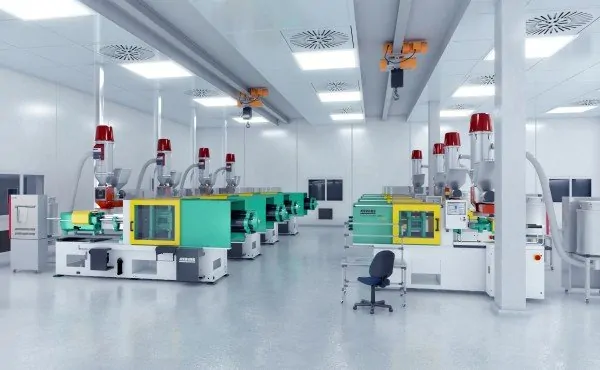In the dynamic landscape of injection molding, thin-wall injection molding stands out as a specialized technique demanding precision and expertise. This comprehensive guide aims to unravel the secrets of successful thin-wall molding, providing everything you need to know about the process. From understanding the nature of thin walls to exploring the intricacies of the molding process and its applications, this blog is a deep dive into the world of thin-wall injection molding.
What is Thin Wall Injection Molding?
Thin wall injection molding refers to the manufacturing process of creating plastic parts with thin and lightweight walls. These walls are typically less than 1mm thick, requiring specialized techniques and considerations to achieve optimal results.
Why Use Thin Wall Injection Molding?
- Weight Reduction:
- Thin-wall molding allows for the creation of lightweight plastic parts, crucial for industries where weight is a critical factor.
- Material Savings:
- Using less material for thin walls not only reduces costs but also contributes to sustainability efforts by minimizing material waste.
- Faster Cooling Times:
- Thin walls facilitate quicker cooling, leading to shorter cycle times and increased production efficiency.
The Nature of Thin-Wall Filling
Achieving success in thin-wall injection molding relies on understanding the unique challenges associated with filling these delicate structures:
- High Injection Speeds:
- Rapid injection is necessary to fill thin walls before premature solidification occurs, ensuring complete part formation.
- Material Flow Consistency:
- Uniform material flow is crucial to prevent inconsistencies in wall thickness, which can lead to defects.
Other Features of Thin Wall Injection Molding
- High Melt Flow Index (MFI) Materials:
- Thin-wall molding often requires materials with high MFI to facilitate quick and smooth flow through intricate mold geometries.
- Mold Design Precision:
- Molds must be meticulously designed to accommodate thin walls, including features like optimal gate placement and venting.
Thin-Wall Injection Molding Product Design
Considering the arrangement of the inlet port is vital for successful thin-wall injection molding:
- Gate Placement:
- Strategically placing gates ensures even material distribution and prevents issues like flow hesitation and premature freezing.
- Venting Considerations:
- Proper venting prevents air traps, ensuring complete material fill and reducing the risk of defects.
Thin Wall Injection Molding Process
- Material Selection:
- Choose materials with suitable flow characteristics and high MFI to accommodate the demands of thin-wall molding.
- Mold Temperature Control:
- Precise temperature control is crucial to prevent premature solidification and ensure uniform material flow.
- Injection Speed Optimization:
- Adjust injection speeds to match the demands of thin-wall filling, preventing issues like flow hesitation and uneven wall thickness.
Common Applications/Industries Using Thin Wall Molding
- Packaging Industry:
- Thin-wall molding is extensively used in the production of lightweight and cost-effective packaging solutions.
- Electronics:
- The electronics industry benefits from the reduced weight and material savings achieved through thin-wall injection molding.
- Automotive injection molding:
- where the demand for lightweight yet durable components aligns with the benefits of thin-wall molding.
- Lightweight yet durable automotive components are achievable through the precision of thin-wall molding.
- Medical industry
- The medical industry leverages thin-wall molding for medical injection molding applications, producing intricate and lightweight components crucial for medical devices and equipment.
- The precision and efficiency of thin-wall molding make it well-suited for diverse sectors, offering solutions that cater to the specific needs of industries requiring lightweight, cost-effective, and intricately designed plastic parts.
Thin Wall Injection Molding Challenges and Solutions
- Cooling Challenges:
- Implementing advanced cooling strategies, such as conformal cooling, can address challenges related to cooling times and part warpage.
- Material Selection Challenges:
- Continuous exploration of new materials and advancements allows for overcoming challenges related to material properties and flow characteristics.
Conclusion
Thin-wall injection molding represents a pinnacle of precision in the world of plastic manufacturing. As technology continues to evolve, the secrets of successful thin-wall molding unfold through a combination of material science, meticulous mold design, and a deep understanding of the injection molding process. This guide serves as a comprehensive resource for those seeking mastery in thin-wall injection molding, offering insights into the intricacies of the process, practical tips for success, and a glimpse into the diverse applications driving the demand for thin-wall molded products.
Q.1 How thin can injection molded walls be?
In Thin Wall Injection Molding, walls can be remarkably thin, typically less than 1mm thick. The process's precision allows for the creation of intricate plastic parts with reduced wall thickness, contributing to weight reduction, material savings, and faster cooling times, making it ideal for various applications across industries.
Q.2 What is thin wall injection molding machine?
A thin-wall injection molding machine is specifically designed to accommodate the unique challenges of thin-wall molding processes. It features high-speed injection capabilities, precise temperature control, and the ability to handle materials with high melt flow indices. This specialized machine ensures optimal performance in producing intricate, lightweight parts using thin-wall molding techniques.
Q.3 : What thickness wall for reaction injection molding?
In reaction injection molding, the wall thickness can vary, but it often aligns with the principles of thin-wall plastic injection molding. Typically, walls with a thickness of less than 1mm are achievable, optimizing material usage and facilitating faster cooling times for efficient production of lightweight and intricate components.
Q.4: Is high injection pressure needed in thin wall injection molding?
Yes, high injection pressure is often crucial in thin-wall injection molding, especially when using a Thin Wall Mould. The pressure aids in quickly filling the intricate and delicate features of the mold, ensuring complete material distribution and preventing issues like flow hesitation and incomplete filling, common challenges in thin-wall molding.


No comments yet